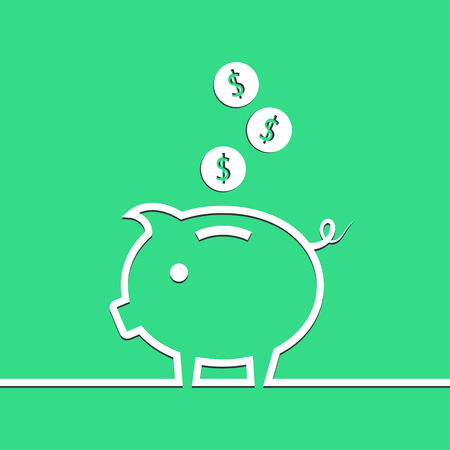Understanding Minimalism in Modern America
Minimalism has become a buzzword across the United States, often tied to images of empty white rooms and tiny homes. But in reality, minimalism is much more than just getting rid of stuff. It’s a lifestyle choice that helps people focus on what truly matters by clearing away the distractions of excess belongings and obligations.
The Roots of Minimalism in the U.S.
Minimalism isn’t new. Its roots can be traced back to early American thinkers like Henry David Thoreau, who famously sought simplicity at Walden Pond. Over time, movements like the back-to-the-land trend of the 1970s and the rise of environmental awareness have helped shape how Americans view “living with less.” Today, with rising costs and a fast-paced digital world, more people are exploring minimalism as a path to financial freedom and peace of mind.
Common Myths About Minimalism
| Myth | Reality |
|---|---|
| Minimalists own almost nothing. | Minimalism is about intentional living, not deprivation. It’s choosing what adds value to your life. |
| You have to live in a tiny house. | You can practice minimalism in any size home—its about mindset, not square footage. |
| It’s only about decluttering physical items. | Minimalism also applies to schedules, finances, and digital life—not just physical stuff. |
Why Minimalism Appeals to Americans Today
The appeal of minimalism in modern America goes beyond just clearing out closets. Many people are overwhelmed by clutter—both physical and mental—and crave a simpler way of living. Minimalism can lead to:
- Financial Freedom: Spending less on unnecessary purchases means more savings and less debt.
- Less Stress: Fewer possessions mean less to clean, organize, and worry about.
- More Time: With fewer commitments and distractions, it’s easier to focus on relationships and experiences that matter most.
- Sustainable Living: Consuming less reduces your carbon footprint and supports a healthier planet.
Minimalism: More Than Just Decluttering
While many start their minimalist journey by cleaning out their closets or downsizing their homes, the real benefits come from changing how you think about what you own and why. It’s about making space for what truly enriches your life—whether that’s travel, hobbies, or quality time with loved ones. Embracing minimalism allows Americans to live well with less and move closer to true financial freedom.
2. Assessing Needs Versus Wants: The Minimalist Mindset
One of the core principles of embracing minimalism is learning to tell the difference between what you truly need and what you simply want. In a consumer-driven culture like America, it’s easy to blur these lines, leading to unnecessary spending and clutter—both in your home and your finances. Developing a minimalist mindset means taking a step back and asking yourself honest questions before making purchases.
Understanding Needs vs. Wants
Needs are things that are essential for your well-being and daily living—think food, shelter, basic clothing, healthcare, and transportation. Wants, on the other hand, are items or experiences that can make life more enjoyable but aren’t strictly necessary. Recognizing this distinction helps you spend money intentionally and avoid impulse buys.
Quick Reference Table: Needs vs. Wants
| Category | Need (Necessity) | Want (Luxury) |
|---|---|---|
| Food | Groceries for home-cooked meals | Daily takeout or dining at restaurants |
| Housing | Rent or mortgage for safe shelter | Extra guest rooms, luxury finishes |
| Transportation | Reliable car or public transit pass | Latest model SUV or sports car |
| Clothing | Seasonal essentials | Designer brands, frequent shopping sprees |
| Technology | A functional smartphone or laptop | The newest device upgrades every year |
Practical Tips to Distinguish Between Needs and Wants
- The 24-Hour Rule: Wait a day before buying non-essential items. This reduces impulse purchases.
- Create a Monthly Budget: List all your expenses and categorize them as needs or wants. This makes spending patterns clear.
- Ask “Why?” Three Times: Before buying, ask yourself why you want the item. If your answers revolve around comfort or status rather than necessity, it’s likely a want.
- Avoid Keeping Up with the Joneses: Social pressure can lead to overspending on luxuries. Focus on your personal goals instead of comparisons.
- Pare Down Subscriptions: Review streaming services, gym memberships, and magazines. Cancel anything you don’t use regularly.
The Impact of Adopting a Minimalist Mindset on Spending Habits
Cultivating this mindset doesn’t mean depriving yourself—it means prioritizing what adds real value to your life while letting go of excess. When you consistently choose needs over wants, you’ll find that your financial resources stretch further. Over time, this approach can free up money for savings, investments, or meaningful experiences rather than fleeting pleasures. Minimalism isn’t about having less for its own sake; it’s about making room—physically and financially—for what matters most.

3. Downsizing and Decluttering: Getting Started
Embracing minimalism isn’t just about owning less—it’s about creating a space that supports your goals, reduces stress, and helps you achieve financial freedom. Here’s a simple step-by-step guide to help you start downsizing and decluttering your home, with tips and popular U.S. options for donating or reselling what you no longer need.
Step 1: Set Clear Goals
Think about why you want to downsize. Is it to save money, reduce stress, or prepare for a move? Write down your reasons and keep them in mind as motivation throughout the process.
Step 2: Tackle One Area at a Time
Start small by focusing on one room or even one closet. Breaking it down makes the task feel less overwhelming and helps you see progress quickly.
Quick Guide: Where to Start
| Area | Easy Items to Begin With |
|---|---|
| Closet | Old clothes, shoes, unused bags |
| Kitchen | Duplicate utensils, expired foods, extra mugs |
| Living Room | Magazines, décor items, unused electronics |
| Garage/Basement | Old tools, sports gear, broken items |
Step 3: Sort Your Belongings
Create three piles: Keep, Donate/Sell, and Trash. Be honest with yourself—if you haven’t used it in the last year or it doesn’t bring you joy, it’s time to let go.
Donation and Resale Options Popular in the U.S.
| Option | Description | How to Access |
|---|---|---|
| Goodwill/Salvation Army | Donate gently used clothing and household goods; supports community programs. | Drop off at local donation centers. |
| Facebook Marketplace/Craigslist | Easily sell furniture, electronics, and other items locally. | Create free listings online. |
| ThredUp/Poshmark | Sell name-brand clothing online; popular for fashion items. | Ship items using provided labels. |
| Habitat for Humanity ReStore | Donate furniture, appliances, and building materials; supports affordable housing projects. | Find nearby locations for drop-off or arrange pick-up for large items. |
| The Freecycle Network™ | Give away anything for free to people in your area who need it. | Join your local group online. |
Step 4: Organize What You Keep
Now that you’ve pared down your belongings, organize what remains so everything has its own place. Use storage bins, shelves, or baskets to keep things tidy. Labeling containers can help everyone in the household know where things belong.
Tips for a Functional and Stress-Free Living Space
- Create “Drop Zones”: Designate spots near entrances for keys, bags, and mail to avoid clutter buildup.
- Mental Health Matters: A decluttered space can help reduce anxiety and create a sense of calm in your home.
- Edit Regularly: Set aside time every few months to review possessions so clutter doesn’t creep back in.
A little effort goes a long way toward making your living space work for you—helping you live well with less while moving closer to financial freedom.
4. Minimalism and Money: Building Financial Freedom
How Owning Less Transforms Your Finances
Minimalism isn’t just about having fewer things—it’s also a powerful way to take control of your money. By choosing to own less, you naturally spend less on unnecessary purchases. This simple lifestyle shift can help you cut down expenses, avoid impulse buys, and focus your budget on what truly matters.
The Financial Benefits of Minimalism
| Minimalist Choice | Financial Impact |
|---|---|
| Buying only what you need | Reduces wasteful spending |
| Simplifying your home and lifestyle | Lowers housing, cleaning, and maintenance costs |
| Prioritizing quality over quantity | Leads to smarter investments that last longer |
| Avoiding the debt trap | Keeps credit card balances low and boosts savings |
| Focusing on experiences instead of things | Encourages meaningful spending that brings joy |
Spending Less: The Minimalist Mindset in Action
When you adopt minimalism, you start asking yourself important questions before every purchase: “Do I really need this?” or “Will this add lasting value to my life?” This habit helps keep your spending in check and reduces clutter in both your space and your budget.
Saving More for What Matters Most
With fewer expenses, it becomes easier to save money each month. Instead of stretching your paycheck to cover bills for things you don’t use or need, you can build an emergency fund, invest for retirement, or save up for future goals like travel or education.
Eliminating Debt Through Simplicity
Minimalists often find it easier to pay off debt because they’re not adding new charges to their credit cards with unnecessary purchases. By focusing on needs rather than wants, every dollar saved can go directly toward reducing debt and building financial security.
Prioritizing Meaningful Investments for a Secure Future
A minimalist approach means you have more money available for the things that matter most—like investing in your health, personal growth, or long-term financial security. Instead of chasing trends or keeping up with the Joneses, you’re able to put your resources where they’ll make the biggest impact on your happiness and well-being.
5. Living Intentionally: Experiences Over Possessions
Minimalism is not just about owning fewer things—its about making room for what truly matters. In the United States, where consumer culture often encourages us to buy more, embracing a minimalist lifestyle means shifting our focus from accumulating possessions to creating meaningful experiences. This approach helps us find joy and fulfillment without overspending or feeling pressured to keep up with others.
Building Stronger Relationships
One of the greatest benefits of minimalism is having more time and energy for the people we care about. Instead of spending weekends shopping or organizing clutter, you can use that time to connect with family and friends. Simple activities like backyard barbecues, game nights, or hiking trips create lasting memories at little cost.
Enjoying Hobbies and Passions
Minimalism gives you the freedom to explore hobbies that might have been pushed aside by busy schedules or financial stress. Whether its gardening, painting, cooking new recipes, or learning a musical instrument, investing your time in enjoyable activities brings satisfaction that buying new gadgets cant match.
Engaging with Your Community
Getting involved locally can bring a sense of belonging and purpose. Many American towns and cities offer free or low-cost community events such as farmers markets, outdoor concerts, volunteer opportunities, and local festivals. These experiences foster connections and make life richer without draining your wallet.
Unique American Experiences That Don’t Break the Bank
| Experience | Description | Cost |
|---|---|---|
| National Park Visits | Explore natural beauty at over 400 sites across the country. | Low (entrance fees or annual pass) |
| Potluck Dinners | Share homemade dishes with neighbors and friends. | Very Low |
| Community Sports Leagues | Join local softball, basketball, or soccer leagues for fun and fitness. | Low to Moderate |
| Cultural Festivals | Attend free street fairs celebrating food, music, and art. | Free or Low Cost |
| Museum Free Days | Many museums offer free admission on certain days each month. | Free |
Choosing Experiences That Matter Most to You
The key is to identify what brings genuine happiness to your life. By focusing on relationships, passions, community involvement, and special experiences unique to American culture, you can live well with less—and move closer to true financial freedom.

